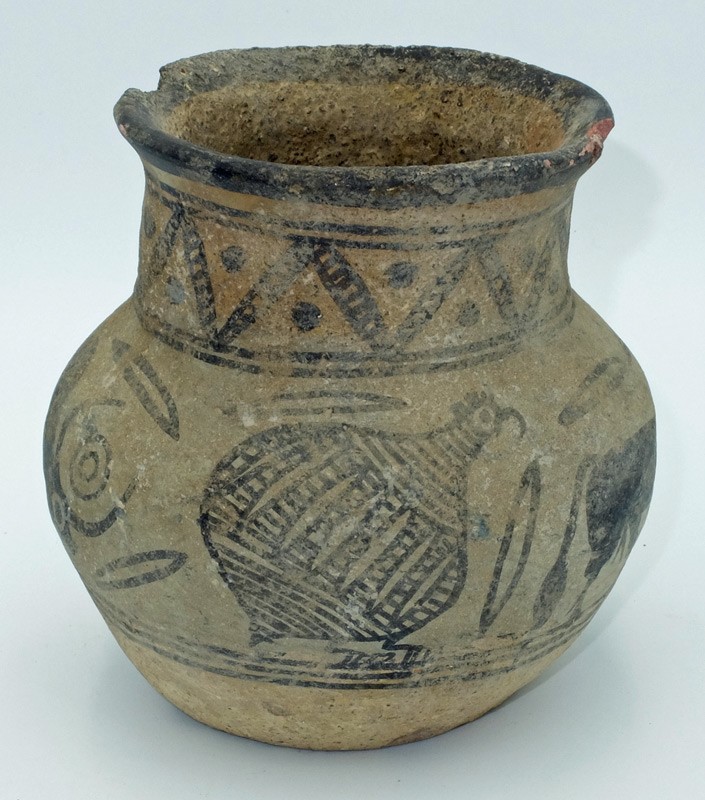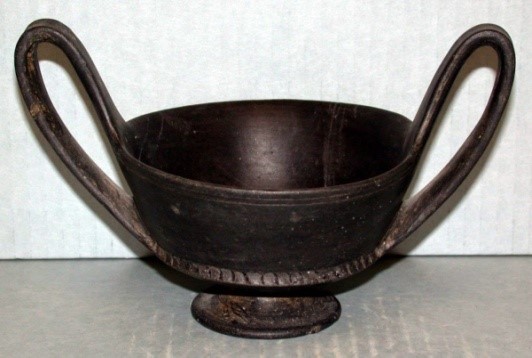EDEN BLOGS
HISTORY OPTIONAL - IRON AGE I HISTORY CONCEPT SERIES I ARTICLE - III
HISTORY OPTIONAL - IRON AGE
We study the Iron Age culture here because Megalithic culture is very much a part of Iron Age. The Iron Age in the Indian subcontinent succeeded the Late Harappan culture. The main divisions of Iron Age in India are the Painted Grey Ware (PGW) culture (1100 to 350 BC) and the Northern Black Polished Ware (NBPW) culture (700 to 200 BC).
Iron Age in India brings one to the threshold of ancient history. This culture had recorded history. Literary accounts of the contemporary period are recorded in Vedas, Upanishads and other Brahmanic literatures. A combination of archaeological evidences and such literary accounts have become a standard method of dealing with Iron Age culture in India.
Historical kingdoms of the Iron Age:
- Iron Age India (1200-272 BC)
- Maha Janapadas (700-300 BC)
- Magadha Empire (648-424 BC)
- Nanda Empire (424-321 BC)
- Maurya Empire (Pre-Ashoka) (321-272 BC)
With the exception of the earliest phase of the Rigveda, most of the Vedic period, falls within the early part of the Indian Iron Age around 12th to 6th centuries BC.
Gangetic Valley:
The colonization of Ganga basin by iron users can be taken as one of the best evidence of second urbanization in India. Urban centres, which mushroomed around Indus, Ghaggar and its tributaries during 2600 BC to 1500BC were generally deserted after this time. Evidence of full fledged adoption of iron, however, is not seen until another 2 to 3 centuries.
Painted Grey Ware Culture:
Early phases of this culture are associated with copper and bronze. The phase, which corresponds with Northern Black Polished ware phase in Genga valley, has yielded iron tools but stone tools also continued. The Painted Grey Ware culture (PGW) is an Iron Age culture of Gangetic plain, lasting from roughly 1000 BC to 600 BC. It is contemporary to, and is a successor of the Black and red ware culture. It probably corresponds to the later Vedic period. It is succeeded by Northern Black Polished Ware from ca. 500 BC.
The first large-scale and effective use of iron in India is associated with this culture. The PGW culture is found in the Indo-Gangetic Divide and the upper Ganga-Yamuna doab, the ancient Aryavarta and Madhyadesa.
Northern Black Polished Ware Culture and the Second Urbanization:
The Northern Black Polish Ware (NBPW) Culture in India is a definite Iron Age Culture, succeeding the Painted Grey Ware Culture. Iron technology accelerated colonization of the middle and lower Ganga valley by farmers around 700 BC onwards. The characteristic pottery of this period is Northern Black Polished Ware. The NBP period saw the emergence of cities and first political entities known as Mahajanapadas in the Ganga plains in the 600 BC.
This period witnessed the second urbanization of India. By 600 BC a number of these Mahajanapadas had been assimilated into the first Indian empire known as the Magadhan Empire with its capital at Pataliputra being located at the place where modern Patna in Bihar is
situated. The Magadhan Empire was succeeded by the Mauryan Empire in the 400 BC. The best known Mauryan emperor, Ashoka, expanded the empire up to Karnataka in the south, Bangladesh in the east and Afganistan in the northwest. He also patronized Buddhism and promoted its spread within the country as well as outside in Sri Lanka and other countries of Asia.
The pillar and rock edicts of emperor Ashoka were written in Brahmi script. Coinage in the form of silver punch-marked coins appeared in this period.
Southern Zone:
Iron Age in this area does not develop any special characteristic of its own like what has been observed in Western Uttar Pradesh. The Iron Age in South India till today is known entirely from a large variety of burials and their accompanying grave goods. Since these graves are mostly megalithic in nature the cultures are traditionally known as ‘Megalithic Culture’.
In all Iron Age sites of Deccan India Black-and-Red ware is seen as the common feature of Iron Age and Megalithic culture.



{{doubts.user.firstName}}
{{doubts.createdAt | formatDate}}anurag
{{'' | formatDate}}If you are an IAS aspirant and searching for IAS Coaching in Ranchi for preparation then click here